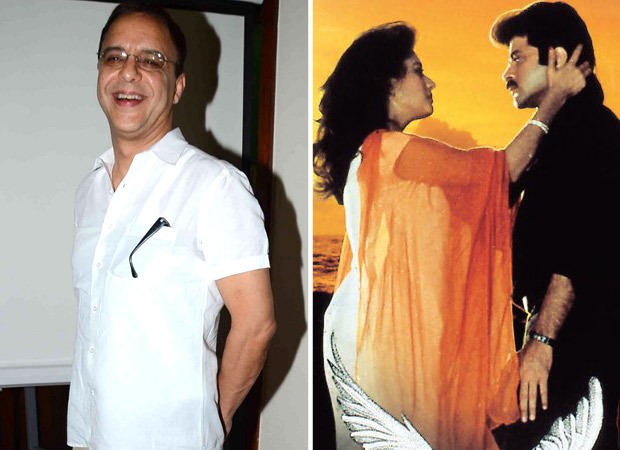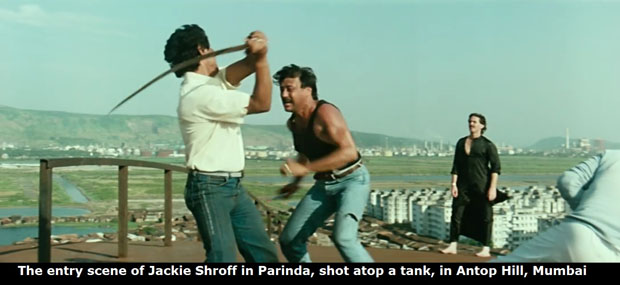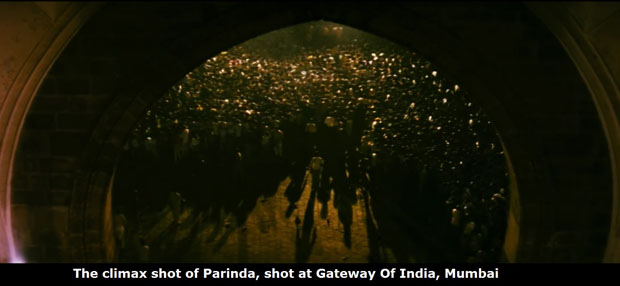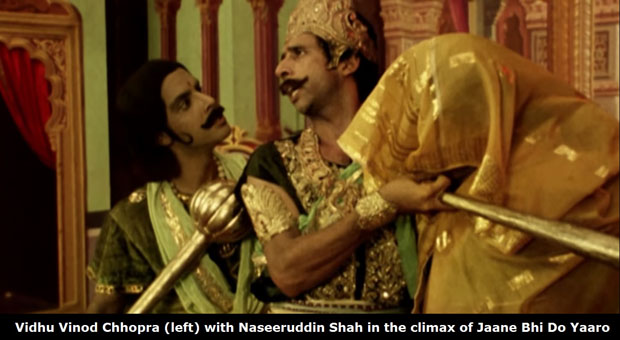For any struggling or independent filmmaker, it’s a Herculean task to keep costs in control and yet come up with a fine product. Veteran filmmaker Vidhu Vinod Chopra, too, has faced it in the beginning of his career when he was making small-budget high-concept flicks. One would expect that after his films became huge hits and his condition improved, he would have stopped cutting costs. However, the director-producer continues to smartly save on the costs of the film even to this day and he reveals about it with some interesting examples in the book ‘Unscripted’ written by Abhijat Joshi.

Vidhu Vinod Chopra sums it up why he believes in working on the budget with this quote, “When you spend hundreds of crores, there’ll be pressure on you to recover the investment, so you’ll have to appeal to the lowest common denominator.” He also adds, “People love mediocrity because it often results in box-office success. But if you want to maintain a certain standard, stay within the budget. There’s no other way to make good films.”
For his acclaimed 1985 film Khamosh, Vidhu Vinod Chopra was provided with the budget of Rs. 8 lakhs from NFDC. But NFDC had a condition – they’d give only 75% of the budget, and that too, after 25% of the budget is spent by the filmmaker. The 25% of the budget amounts to Rs. 2 lakhs, a figure that Vidhu didn’t have. So he requested the actors to sign contracts stating that they have received the money. The actors trusted him and signed the contract which was sent to NFDC, which then released the funds for Khamosh.

Even when he got bigger actors like Anil Kapoor, Jackie Shroff and Madhuri Dixit for Parinda (1989), he still faced budget issues. The film was made in just Rs. 12 lakhs and resulted in some interesting jugaad by the team. The entry scene of Jackie Shroff was supposed to be shot in Dadar, Mumbai. But when the owners asked for Rs. 5000 as shooting charges, Vidhu Vinod Chopra refused. Hence, they drove around the city to find a place as per their requirement, that is, a place with a lot of steps. Finally, they found such a spot in Antop Hill, a slum dominated locality. It was a series of steps leading up to a water tank. The BMC, in fact, asked for mere Rs. 250 as this was not an ideal shooting place. However, the location gave a very nice touch and even today, it’s memorable.
However, for shooting the Gateway of India scenes in the climax, Vidhu Vinod Chopra didn’t take permission. He went there with cinematographer Binod Pradhan and secretly shot the crowd scenes, during New Year’s Eve. Then during the next New Year’s Eve, he again shot there, this time with the main actors. When they decided to go there for the third time, they did a daring act. They broke the lock of the Gateway Of India and went on top! Before doing so, they made friends with a cop on duty and as Vidhu puts in, they gave him the ‘necessary encouragement’ to help them out. Once they reached the top, Binod Pradhan started the camera and Vidhu Vinod Chopra signalled the cop by waving his handkerchief. At this, the cop pretended to lathi-charge. As a result, people began to run helter-skelter and the makers got a spectacular top shot! Nana Patekar was also present with the cop and he also helped in ‘crowd control’!

For his 2007 thriller Eklavya, Vidhu Vinod Chopra used two cameras to shoot the film for the first time. Again there was an economical reason behind doing so. The filmmaker wanted to save both time and money. And it worked. The film was supposed to be completed in 37 days, but got done in 34 days. After the shoot was completed, lead actor Amitabh Bachchan wanted to fly to Mumbai in a private plane. Vidhu, however, had to refuse, citing costs. Amitabh understood and hence he paid for his own pocket when he chartered the plane. He also gave a ‘lift’ to Vidhu Vinod Chopra and his wife Anupama Chopra.
Similarly, Amitabh’s office had asked for an expensive hotel room for the Rajasthan schedule. Yet again, Vidhu politely said that it won’t be possible as it would have cost Rs. 65,000 more than the estimated budget. And yet again it was Big B who paid from his own pocket.
So touched was Vidhu with Big B’s generosity that later, he gifted Amitabh Bachchan a Rolls-Royce Phantom, then worth Rs. 4 crore.
Even after delivering numerous blockbusters, Vidhu Vinod Chopra continues to believe in this method of filmmaking and even teaches it to the directors working for his productions. Bejoy Nambiar, who made Wazir (2016) for VVC Films, called the producer one day and told him that for a scene involving Farhan Akhtar, he’ll need to spend Rs. 1.50 lakhs. This is because the scene also involved 60 kids in the background and their uniforms would have to be stitched. Vidhu however made it clear that he was not going to waste so much money for actors who were supposed to be in the background. He suggested changing the scene and showing Farhan meeting the heroine (Aditi Rao Hydari) with a dog. He also reminded that Rajkumar Hirani has a pet dog that he can use for a shoot as he won’t charge a penny! Bejoy agreed; he later also found a school where he was able to shoot with the kids without having to pay for their uniforms.

That Vidhu Vinod Chopra is good with controlling costs became a known thing. NFDC decided to finance Kundan Shah’s cult comedy Jaane Bhi Do Yaaro (1983) on one condition, that is, Vidhu should be the production controller! And Vidhu, obviously, did a very good job. He says, “To save money, I did about eight or nine walk-on parts”! One of them is that of Dushasana in the unforgettable climax of the film. Vidhu Vinod Chopra reveals that he was not supposed to do the role and an actor was hired for it. He was asked to shoot for 4 days and he was told that he’ll be paid Rs. 500 per a day. But on the day of the shoot, he asked for Rs. 2000 a day. The shot was ready and Vidhu tried to persuade him and after a point, even agreed to pay him Rs. 1500 a day. Yet, the actor didn’t relent. He thought Vidhu would give in to his demands as the shot was ready. With no other choice, the filmmaker then decided to play the part. He donned the costume and came on the sets, surprising Kundan Shah and everyone else!
In the later part of the book, Abhijat Joshi reveals that during the production of Vidhu’s film Kareeb (1998; which was co-written by Abhijat), Vidhu had specifically asked him to make sure every scene had a purpose. Vidhu’s rationale was that Rs. 2 lakhs were allotted to each shoot day and assuming each scene took a day to be filmed, taking out four unnecessary scenes would save Rs. 8 lakhs.
Blockbuster filmmaker Rajkumar Hirani also is a Vidhu Vinod Chopra discovery and his LCD (laugh-cry-drama) formula of writing films has assumed legendary status. Its idea is simple – Hirani and his writing partner Abhijat believe that each and every scene should either be funny, emotional or dramatic and that no filler or unwanted scenes should be a part of the script. After reading about VVC’s cost-effective measures, one can’t help but wonder – did Rajkumar Hirani get the idea for this million-dollar-idea from Vidhu Vinod Chopra?
In fact, one can even say that Rajkumar Hirani’s famous LCD (laugh-cry-drama) formula of writing films might have been inspired by Vidhu’s style of working.
Also Read: How Lal Krishna Advani helped a struggling Vidhu Vinod Chopra in late 70s is sure to MELT your heart!
from Dj4u Mr Jatt Dj Com https://ift.tt/2YoVHD4
No comments:
Post a Comment